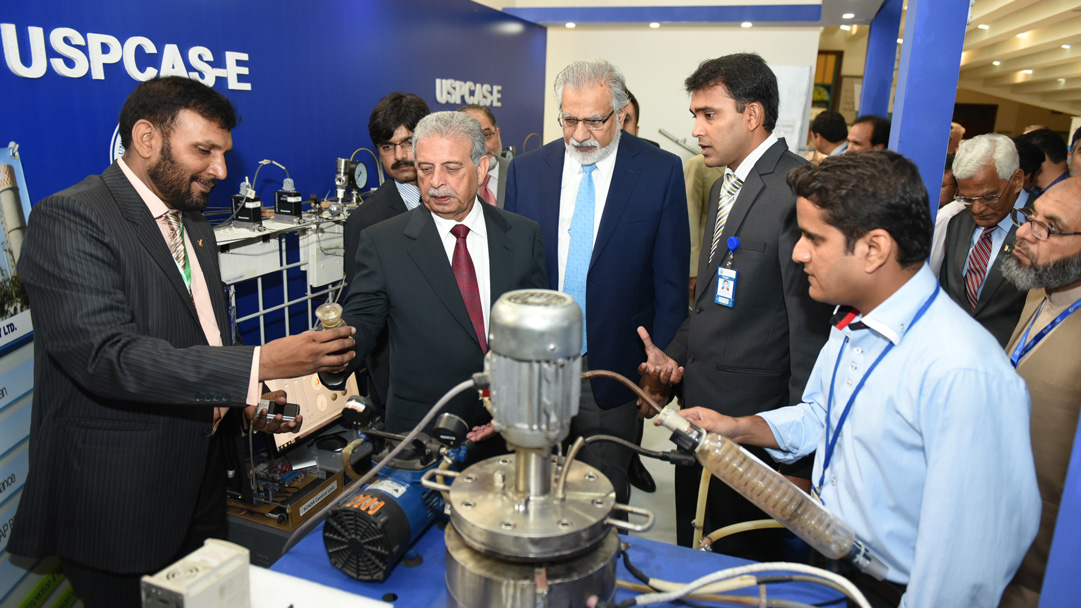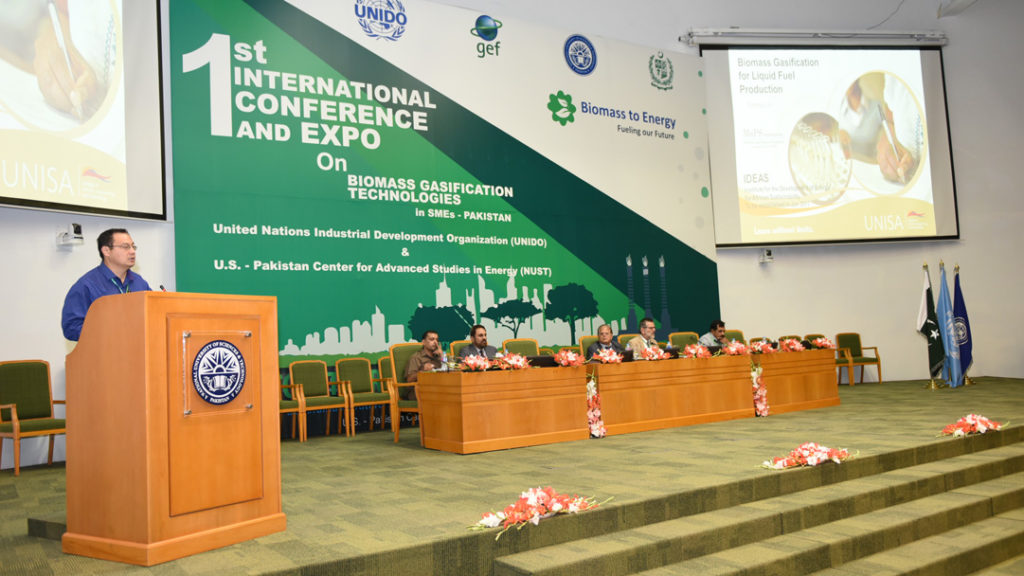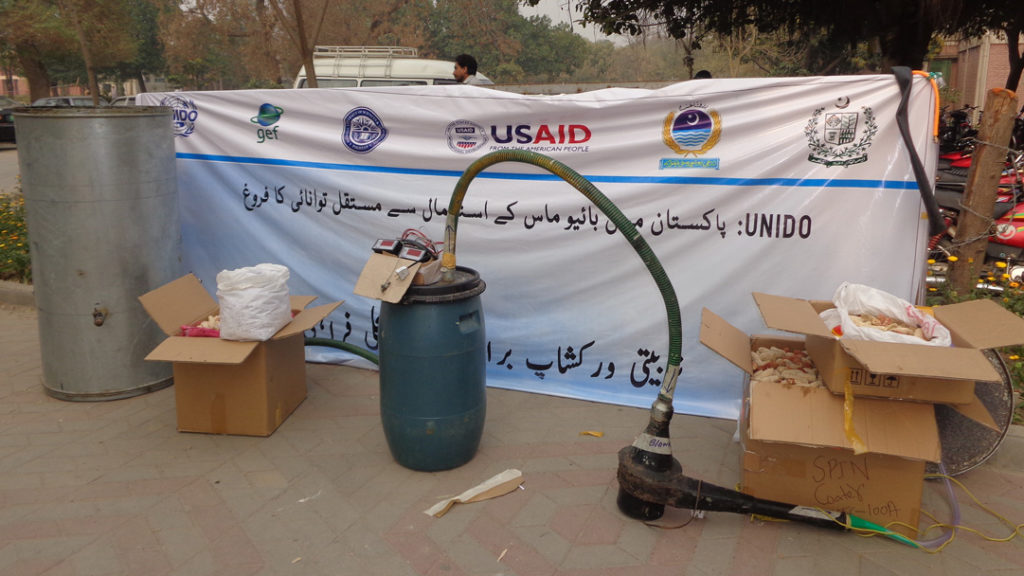Vision and Technology: UNIDO Taps USPCAS-E to Expand Energy Options

Vision and Technology: UNIDO Taps USPCAS-E to Expand Energy Options
South Asia is cited as the major producer of biomass resources. This includes agricultural and livestock waste, wood residue from forests, and industrial wastewater from the agriculture industry. Thailand derives nearly one-third of its energy from biomass using biomass gasification technology (BGT) that leverages agricultural waste. Through a controlled and enclosed burning process, BGT creates syngas, a fuel for electricity generators.
It’s a cost-effective way to produce electricity while cutting down on the pollution from open agricultural trash burning. However, Pakistan hasn’t significantly built out its biomass capability yet. That’s why the United Nations Industrial Development Organization (UNIDO) funded the U.S.-Pakistan Center for Advanced Studies in Energy (USPCAS-E) at the National University of Sciences and Technology (NUST) to lay the groundwork for developing Pakistan’s biomass energy capacity and to help generate interest for this energy source within the business community.
Scholars from USPCAS-E NUST won the grant in 2015 through a competitive bidding process. The success of that first project led to more collaboration. Most recently, USPCAS-E has been providing energy efficiency training and a demonstration facility that will show the potential users the research and technology in action.
Discovering the possibilities
Pakistani Small and Medium Enterprises (SMEs) need to know about biomass gasification technologies (BGT), says Muhammad Zubair, assistant professor of thermal energy engineering at USPCAS-E NUST and principal investigator on the biomass UNIDO projects.
“UNIDO thought it was better to do some capacity building before introducing gasifiers into the market,” he explains.
To accomplish the task, UNIDO awarded USPCAS-E a $380,000 USD grant.
The project involved evaluating the energy requirements of SMEs in Pakistan – the potential users of gasifiers – as well as how these businesses currently meet their energy needs. That is, are they on the grid or using alternative means, such as diesel or gasoline generators? Can they shift to power systems based on biomass gasification technology?
Along with looking at the potential users, the team had to evaluate potential equipment and service providers who could build and help operate the systems. The researchers also identified financial resources to help businesses invest in BGT as well as potential supply chain resources for the raw agricultural by-products burned to make syngas.
“We have data about the feedstocks available in different regions of Pakistan,” Zubair says. “We also have documented the requirements of communities and SMEs and can show how much a business can save.”
For instance, the researchers found that a small business using a diesel or gasoline engine is spending six times more than the cost of a biomass gasification system (BGT). The cost of producing one unit of electricity from BGT ranges from 5-10 U.S. cents, depending on the cost of biomass feedstock.
Reports on these findings were only part of the results of this two-year effort. Zubair and his team – which included several students – created business plan templates to help businesses evaluate the investment and secure financing. The team also held workshops to promote biomass technology and created manuals for the laypeople who would use and run the facilities.
The NUST team also created curricula on BGT for undergraduate and master’s programs. In fact, they even developed a curriculum for vocational training institutes to ensure that people of many educational levels could be ready to serve the BGT industry.
Then the team held an international conference to further educate the business community about BGT and to connect them to relevant resources.
“We invited all the companies related to biomass energy to display their projects and we had a good turnout. The conference also facilitated several memoranda of understanding between local and international companies for technology transfer,” Zubair says.
 Nurturing growth
Nurturing growth
For the second phase of this UNIDO-funded initiative, Zubair and USPCAS-E scholars are continuing their work of cataloging resources, educating businesses and documenting financial concerns related to BGT. They’re adding to their studies on supply chain and mapping out how to move agricultural by-products to the BGT plants that need them.
“A major component of this project is biomass cluster development,” Zubair notes.
A business or technology cluster is a concentration of interconnected and related suppliers, businesses and institutions focused on a specific technology in a geographic region. Technology clusters aim to harness resources, promote technology adoption and increase the productivity of cluster participants. California’s Silicon Valley is a prime example of a technology cluster.
In addition, Zubair’s current work includes a biomass demonstration project in a plywood factory. This facility serves as a showcase for other Pakistani business operators that demonstrates the benefits of these systems.
“They have wood chips and residues. We are now going to set up a 50-kilowatt system. We’ll provide the technical assistance and we’ll operate it. Then we’ll get the research data and have the patent for the system,” Zubair says.
“This will be our highest-scale project outside the academic environment,” he continues. “We’ll get more projects by demonstrating that successful project, so I’m hopeful it will help with sustainability” for the USPCAS-E program itself.
That is, consulting on BGT systems could become a healthy revenue generation source. According to Zubair, creating the technology cluster will be key to that effort, and USPCAS-E will be positioned as the hub.
Helping businesses make more, use less energy
While the BGT projects are designed to help Pakistani businesses make their own power onsite, prior work done by USPCAS-E scholars also earned them the opportunity to help teach businesses to use less energy overall.
That’s important because, right now, Pakistan is seeking to adopt energy efficiency measures. For example, the textile industry makes up about 62 percent of Pakistan’s exports and employs 45 percent of the total labor workforce. However, it could be more vital and profitable if it employed similar energy efficiency measures used by neighboring export competitors.
“The textile sector energy costs in India are one-fifth of what they are in Pakistan,” says Ali Qureshi, an expert in sustainability and biomass systems with the United Nations Industrial Development Organization (UNIDO). “In Bangladesh, the energy cost is one-ninth of what it is in Pakistan.”
High energy bills are putting Pakistan’s largest export industry at a disadvantage, and that’s one reason UNIDO is ramping up to deploy energy efficiency training on a wide scale.

Spreading the word
UNIDO’s Qureshi calls the recent training sessions “capacity building.” Specifically, his organization is trying to build a pool of certified energy auditors and energy managers. Knowing where you currently stand through energy audits and then learning to mitigate waste are critical skills for cutting business costs and making Pakistani enterprises more competitive on the global stage. Significant savings can be realized through efficiency measures.
“Although there is potential for energy efficiency, almost 10 to 40 percent in typical buildings and industries in Pakistan, less than five percent of our organizations implement energy efficiency,” says Dr. Muhammad Bilal Sajid, assistant professor of thermal energy engineering at USPCAS-E NUST.
As a starting point in this educational effort, the UNIDO team benchmarked Pakistani energy consumption in five key industrial sectors and compared them to potential energy savings via international best practices. Overall, they found that the Pakistani textile market could shave around seven percent off its energy expense, while the ceramics industry could save 10 times that number: 70 percent, says Qureshi. Paper and pulp product manufactures could save 22 percent on their energy bills, TV manufacturers stand to save as much as 45 percent, while the foundry industry could cut 12 percent from its energy costs merely by optimizing processes associated with its coke ovens.
“We focused on these five sectors because there is a lot of potential for energy savings,” says Qureshi. “Since we are going through an energy crisis, our focus should be on the energy efficiency side.”
“Among the list of things that should be evaluated for savings potential, you’ll find lighting, motors, boilers, compressors, pumps and heating or air conditioning equipment,” Sajid says.
Motors, compressed air systems and building envelopes – the walls, windows, doors and other physical separators between a building’s conditioned and unconditioned spaces – are the areas where the savings reside, he adds.
Coming up to standards
Along with teaching efficiency measures, the UNIDO program will teach continuous improvement similar to guidelines from the international organization for standardization.
“We are working on establishing an energy management system in the industry that is in line with the international standard, ISO 50001 energy management systems,” says Qureshi.
UNIDO’s program also served as the foundation for a new elective course in NUST master’s program, Industrial Energy Management. This class draws directly from the UNIDO trainings, Sajid says.
That training reached approximately 20 people associated with the USPCAS-E program, as well as energy consultants, industry representatives, and participants from the public sector. Many will continue with the program as trainers, consultants or participants in the ISO 50001 energy management system initiative. Together USPCAS-E and UNIDO aim to increase energy efficiency, reduce greenhouse gas emissions and create new job opportunities for Pakistan’s energy professionals.
As of June 2019, USPCAS-E at UET Peshawar secured funding of $50,000 under UNIDO’s energy management systems (EnMS) project for Khyber Pakhtunkhwa and Balochistan. Introducing a regional energy consortium model, the UNIDO—USPCAS-E partnership aims to develop a culture of EnMS and investments in energy efficiency through piloting EnMS and energy system optimization in around 50 organizations in Pakistan.